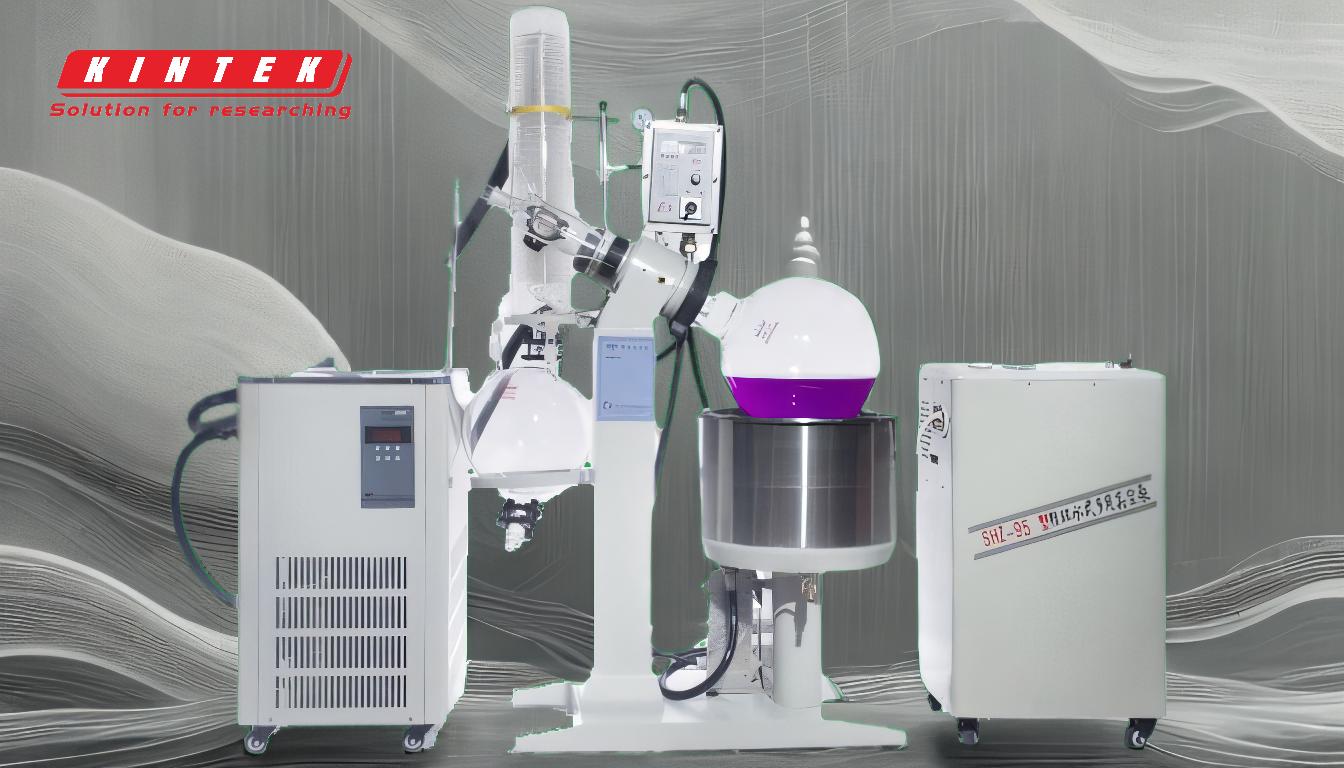Rotary evaporation is a widely used laboratory technique designed to efficiently remove solvents from samples by increasing the rate of evaporation. This process involves distributing the solvent as a thin film inside a rotating flask under reduced pressure and elevated temperature, which accelerates the evaporation of volatile solvents while preserving the integrity of less volatile compounds. Rotary evaporators are versatile tools used in various fields, including chemical, pharmaceutical, biological, and food industries, for applications such as solvent recovery, concentration, crystallization, drying, and separation. They are particularly valuable for handling heat-sensitive materials and large volumes of volatile solvents.
Key Points Explained:

-
Purpose of Rotary Evaporation:
- Rotary evaporation is primarily used to remove solvents from samples, reducing their volume and concentrating the desired compounds.
- It is especially effective for separating solvents from organic, inorganic, and polymeric materials, particularly when the solvent has a lower boiling point than the target compound and does not form an azeotrope with it.
-
How Rotary Evaporation Works:
- The process involves placing the sample in a rotating flask, which creates a thin film of the solvent on the flask's interior surface.
- The flask is heated, and a vacuum is applied to lower the pressure, which reduces the boiling point of the solvent and increases the rate of evaporation.
- The evaporated solvent is then condensed and collected in a separate flask, leaving behind the concentrated sample.
-
Key Components of a Rotary Evaporator:
- Rotating Flask: Holds the sample and creates a thin film for efficient evaporation.
- Heating Bath: Provides controlled heating to the flask.
- Vacuum System: Reduces pressure to lower the boiling point of the solvent.
- Condenser: Cools and condenses the evaporated solvent for collection.
- Collection Flask: Stores the recovered solvent.
-
Applications of Rotary Evaporation:
- Solvent Recovery: Efficiently recovers solvents for reuse, reducing waste and costs.
- Concentration: Concentrates samples by removing excess solvent, which is useful in analytical chemistry and sample preparation.
- Crystallization: Facilitates the formation of crystals by slowly removing solvents.
- Drying: Removes solvents from solid or liquid samples, often used in pharmaceutical and biological research.
- Separation: Separates mixtures based on differences in volatility, particularly in chemical synthesis and purification processes.
-
Advantages of Rotary Evaporation:
- Efficiency: The thin film and reduced pressure significantly increase evaporation rates.
- Gentle on Samples: The process is suitable for heat-sensitive materials due to the controlled temperature and reduced pressure.
- Versatility: Applicable to a wide range of solvents and sample types.
- Scalability: Can be used for both small-scale laboratory experiments and larger pilot-scale production.
-
Industries and Fields Using Rotary Evaporation:
- Pharmaceuticals: Used for drug formulation, purification, and solvent recovery.
- Chemicals: Essential for chemical synthesis, purification, and solvent recycling.
- Biotechnology: Applied in the preparation of biological samples and extraction of compounds.
- Food and Beverage: Used in flavor extraction, concentration, and molecular gastronomy.
- Academic Research: Commonly used in teaching and research laboratories for various experimental purposes.
-
Considerations for Using a Rotary Evaporator:
- Solvent Properties: The boiling point, volatility, and compatibility of the solvent with the equipment must be considered.
- Sample Sensitivity: Ensure the sample can withstand the applied heat and vacuum conditions.
- Equipment Maintenance: Regular cleaning and maintenance of the rotary evaporator are necessary to ensure optimal performance and longevity.
-
Specialized Uses:
- Molecular Cooking: Used in gastronomy to create concentrated flavors and unique textures.
- Heat-Sensitive Procedures: Ideal for processes requiring gentle handling of sensitive materials, such as in medical and biological research.
In summary, rotary evaporation is a fundamental technique in laboratories and industries, offering an efficient and gentle method for solvent removal, concentration, and purification. Its versatility and precision make it indispensable in fields ranging from pharmaceuticals to food science.
Summary Table:
| Aspect | Details |
|---|---|
| Purpose | Removes solvents, concentrates samples, and separates mixtures. |
| Key Components | Rotating flask, heating bath, vacuum system, condenser, collection flask. |
| Applications | Solvent recovery, concentration, crystallization, drying, separation. |
| Advantages | Efficient, gentle on samples, versatile, scalable. |
| Industries | Pharmaceuticals, chemicals, biotechnology, food and beverage, research. |
| Considerations | Solvent properties, sample sensitivity, equipment maintenance. |
Discover how rotary evaporation can enhance your lab processes—contact us today for expert advice!
















